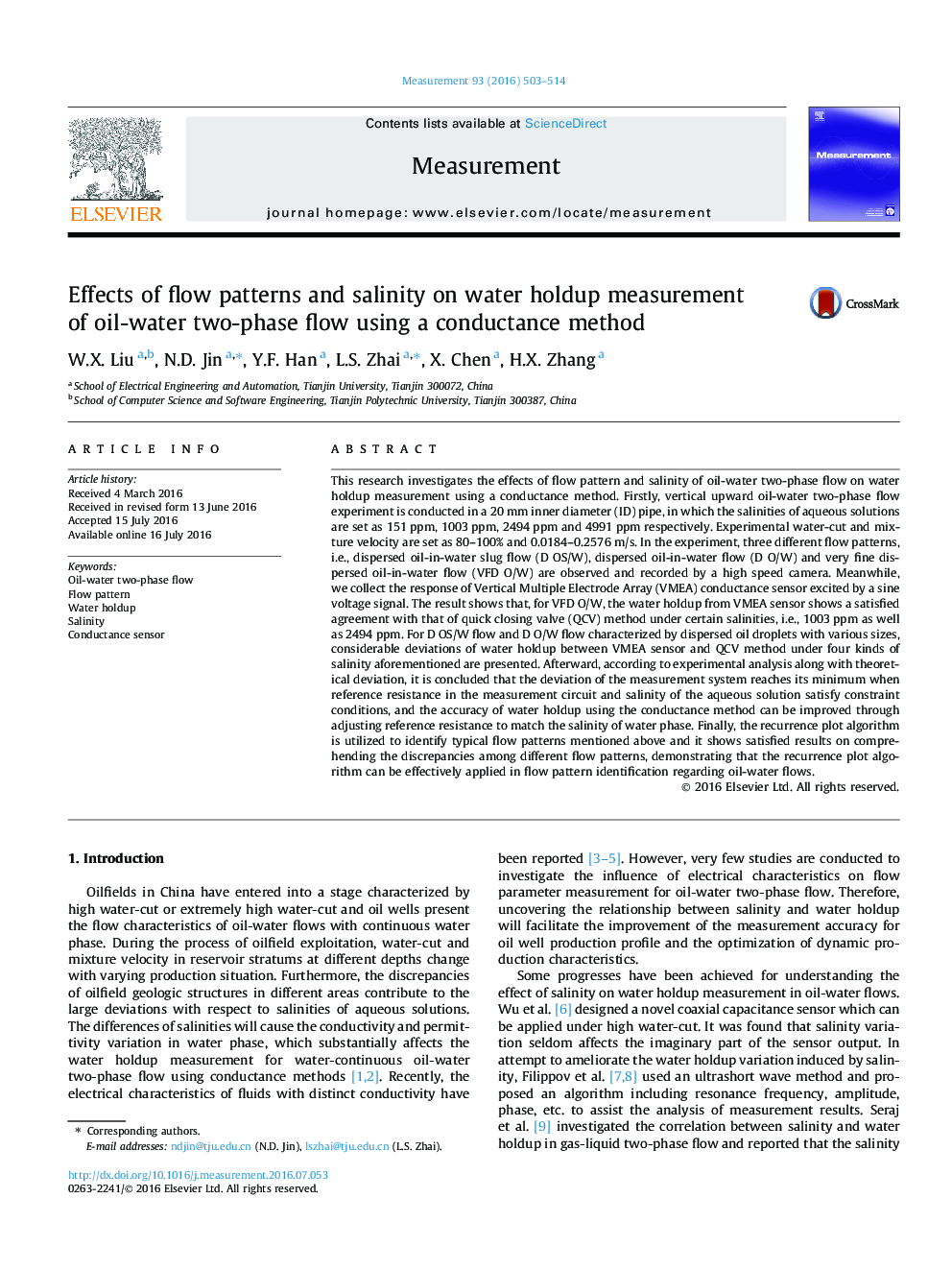| کد مقاله | کد نشریه | سال انتشار | مقاله انگلیسی | نسخه تمام متن |
|---|---|---|---|---|
| 7122902 | 1461494 | 2016 | 12 صفحه PDF | دانلود رایگان |
عنوان انگلیسی مقاله ISI
Effects of flow patterns and salinity on water holdup measurement of oil-water two-phase flow using a conductance method
ترجمه فارسی عنوان
اثرات الگوهای جریان و شوری بر اندازه گیری تعادل آب در جریان دو مرحله ای نفت و آب با استفاده از روش هدایت پذیری
دانلود مقاله + سفارش ترجمه
دانلود مقاله ISI انگلیسی
رایگان برای ایرانیان
کلمات کلیدی
جریان آب دو فاز نفت و آب، الگوی جریان، نگهدارنده آب، شوری حسگر هدایت،
موضوعات مرتبط
مهندسی و علوم پایه
سایر رشته های مهندسی
کنترل و سیستم های مهندسی
چکیده انگلیسی
This research investigates the effects of flow pattern and salinity of oil-water two-phase flow on water holdup measurement using a conductance method. Firstly, vertical upward oil-water two-phase flow experiment is conducted in a 20Â mm inner diameter (ID) pipe, in which the salinities of aqueous solutions are set as 151Â ppm, 1003Â ppm, 2494Â ppm and 4991Â ppm respectively. Experimental water-cut and mixture velocity are set as 80-100% and 0.0184-0.2576Â m/s. In the experiment, three different flow patterns, i.e., dispersed oil-in-water slug flow (D OS/W), dispersed oil-in-water flow (D O/W) and very fine dispersed oil-in-water flow (VFD O/W) are observed and recorded by a high speed camera. Meanwhile, we collect the response of Vertical Multiple Electrode Array (VMEA) conductance sensor excited by a sine voltage signal. The result shows that, for VFD O/W, the water holdup from VMEA sensor shows a satisfied agreement with that of quick closing valve (QCV) method under certain salinities, i.e., 1003Â ppm as well as 2494Â ppm. For D OS/W flow and D O/W flow characterized by dispersed oil droplets with various sizes, considerable deviations of water holdup between VMEA sensor and QCV method under four kinds of salinity aforementioned are presented. Afterward, according to experimental analysis along with theoretical deviation, it is concluded that the deviation of the measurement system reaches its minimum when reference resistance in the measurement circuit and salinity of the aqueous solution satisfy constraint conditions, and the accuracy of water holdup using the conductance method can be improved through adjusting reference resistance to match the salinity of water phase. Finally, the recurrence plot algorithm is utilized to identify typical flow patterns mentioned above and it shows satisfied results on comprehending the discrepancies among different flow patterns, demonstrating that the recurrence plot algorithm can be effectively applied in flow pattern identification regarding oil-water flows.
ناشر
Database: Elsevier - ScienceDirect (ساینس دایرکت)
Journal: Measurement - Volume 93, November 2016, Pages 503-514
Journal: Measurement - Volume 93, November 2016, Pages 503-514
نویسندگان
W.X. Liu, N.D. Jin, Y.F. Han, L.S. Zhai, X. Chen, H.X. Zhang,
